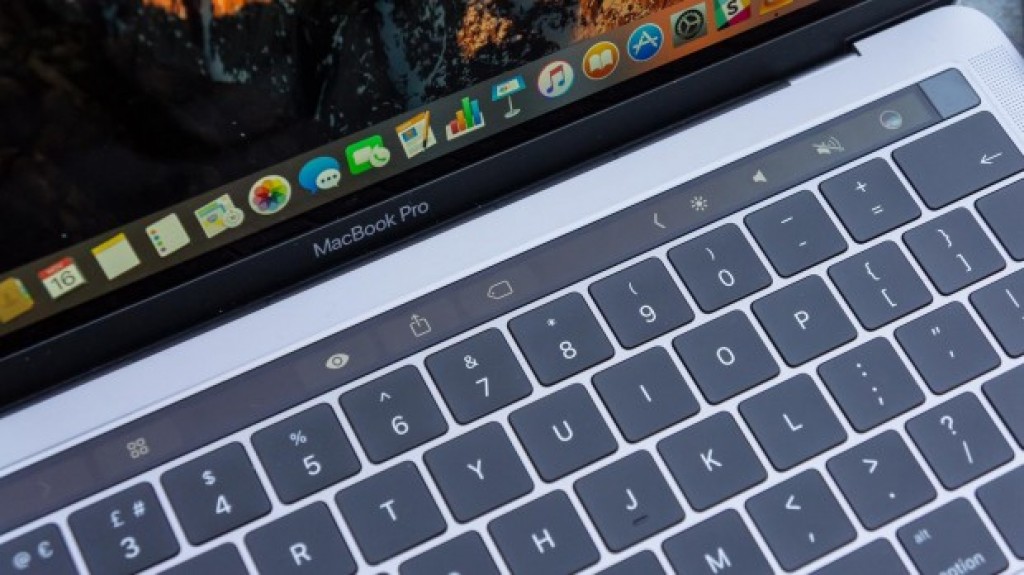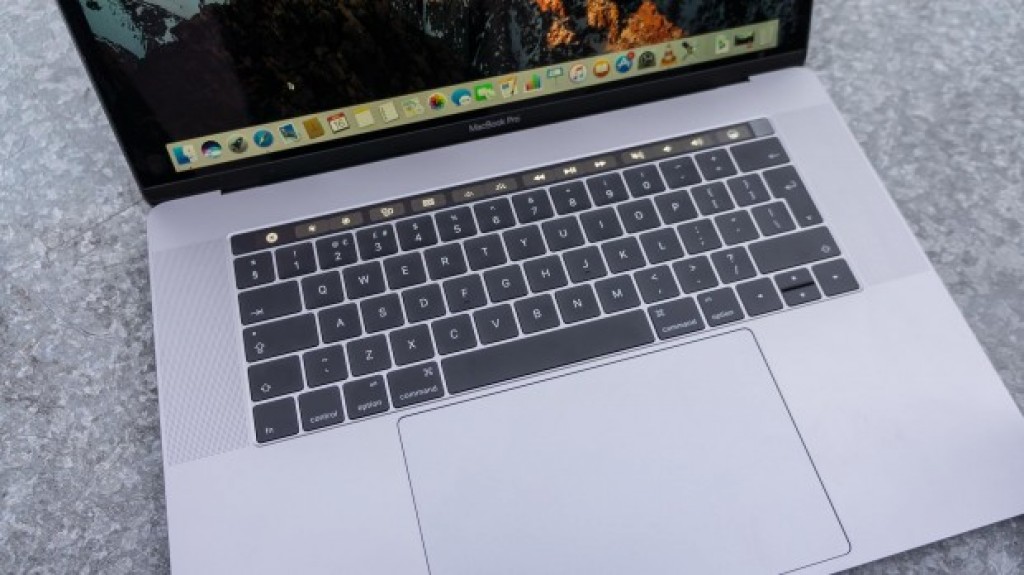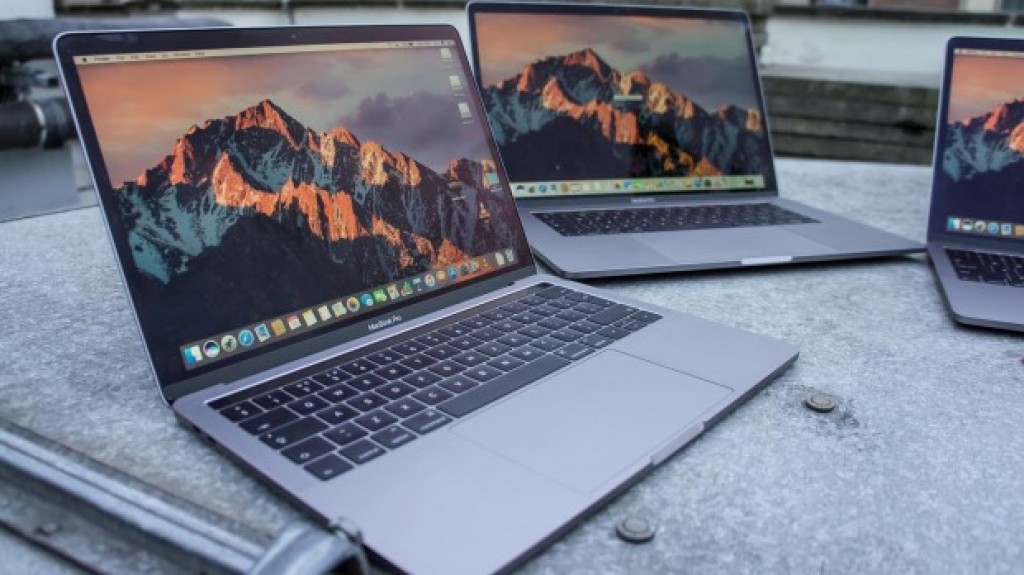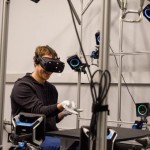
The 2016 MacBook Pro family is here — but new updates are already on the way
The New MacBook Pro was released just a few months ago, but it looks like Apple is already planning to update its new flagship. Code in Apple’s macOS 10.12.4 beta suggests that Apple will be updating all three of its MacBook Pro models with new efficient, powerful Kaby Lake processors. The code was discovered by Apple blog Pike’s Universum, and suggest the refresh will apply to those laptops with a TouchBar, and those without too. That means we should see a good increase in performance across the range.
Should I buy one now? The Macbook Pro in its current form, is probably one of the best laptops you can buy, and will serve you for many years. The Kaby Lake processors should be released around June this year, but they’ll only offer an incremental upgrade in processing power and battery life – the rest of the MacBook Pro should remain the same. Therefore, it’s okay buy now if you need to, but worth holding off if it’s not an essential purchase.
New MacBook Pro (2016) review: In full
Every few years Apple gives its MacBook Pro model a complete redesign – with some designs more conservative than others. The new late-2016 MacBook Pro represents one of the biggest changes ever to Apple’s flagship laptop, and you’ll either love it, or hate it. First, Apple came for your serial port, then your parallel port, and in 2016 it took your phone’s headphone socket. Now, the new MacBook Pro family has come for pretty much everything else – the fucntion keys, HDMI and display ports, memory card reader and pretty much eveything else has gone.
For all the design tweaks, all those alluring nips and tucks, it’s the arrival of the Touch Bar – and more to the point the departure of physical function keys – that’s caused the biggest waves. If you want old-school function keys, then it’s worth saying it upfront: you can still get your fix with the “entry-level” 13in MacBook Pro (£1,449). If you want a MacBook Pro with the all-new Touch Bar, however, you’ll need to find at least another £300. And if you’ve also got your heart set on upgraded SSDs and top-flight processors, then trust me, the new MacBook Pro family are going to cost you big time.
New MacBook Pro (2016) review: Design
There are three areas that define the new MacBook Pro family: the thinness, the keyboard and trackpad, and the screen.
These are the thinnest and lightest MacBook Pros ever, with the 13in version coming in at a mere 1.4kg – the same as a 13in MacBook Air. If you think that’s impressive, then consider that it’s also thinner than a MacBook Air, at least at the thick end. Of course, it doesn’t taper like a MacBook Air to a razor-thin edge, but it’s still a very slender machine.

The 15in model has also emerged transformed. Weight has fallen from a whisker over 2kg to 1.83kg, and Apple has trimmed down the girth from 18mm to an impressively slender 15mm. As 15.4in laptops go, this is pretty much as thin and light as you could possibly ask for.
New MacBook Pro (2016) review: The Touch Bar
The Touch Bar is a thin strip of OLED touchscreen that sits directly above the keyboard, replacing the function-key row. What appears on the Touch Bar is programmable and – importantly – context-sensitive, so different applications can have different “keys” appear. For example, in Safari you see a set of “keys” representing your open tabs, allowing you to quickly flip between them with a quick dab of the finger. Play a YouTube video and a progress bar pops up, allowing you to quickly jump back and forth with a tap or drag of a finger. It’s really quite ingenious.

In the Photos app, you can not only navigate quickly between image thumbnails by swiping left and right, but also, once images are opened, carry out basic editing tasks in full-screen view without having to go near the touchpad. In Messages, you’ll see Quick Text suggestions, including emoji; in Mail, there are shortcut keys that let you send and reply, among others; while Final Cut Pro displays a timeline track allowing you to scroll quickly through your project while previewing the video in full-screen.
And anyone worried about losing the escape key and function keys of the old MacBook shouldn’t worry unduly. If there’s an application that you always use function keys in, it’s possible to add that to a whitelist in the MacBook’s settings so that they always appear when that application is open and in the foreground. And regardless, you can get to these keys quickly and easily by holding down the Fn key, at which point the keys appear instantly along the top row.
Third party Touch Bar support is also on the horizon. Adobe has said its new version of Photoshop, which can work with Apple’s Touch Bar should be available by the end of the year.
The other big news is the inclusion of a Touch ID sensor at the right-hand side of the Touch Bar. The Touch ID sensor isn’t quite flush with the rest of the bar, which, while not the most aesthetically pleasing, does make it easier to find by touch alone. As with the iPhone and iPad, you simply place your finger on it to unlock the Mac. What’s more, you can set it up so different users’ fingerprints will log them in to their account without having to first log out.
New MacBook Pro (2016) review: Performance
Thankfully, those slender bodies haven’t forced Apple to compromise on performance. The non-Touch Bar MacBook Pro is the slower of the three, principally because it makes do with 15W TDP versions of Intel’s Core i5 and Core i7 processors, rather than the 28W CPUs found in the Touch Bar-equipped 13in MacBook Pro. Move up to the 15in MacBook Pro, however, and you get to choose between two substantially more powerful 45W Core i7 CPUs, a choice of AMD’s Radeon Pro 450, 455 and 460 GPUs, and 16GB of memory comes as standard. If it’s power you’re after, then the larger MacBook Pro is still a big step up.
Apple has upgraded the SSD inside the new MacBooks, and as a result the new generation are a claimed 50% faster. The SSDs inside the 2015 MacBook Pros were darn fast already, but Apple’s custom-built drives in the new models blow them into the weeds. By using four PCI Express 3 lanes, the drive in the new MacBook offers potentially double the bandwidth of the previous generation, and in testing, the new models produced a fiery performance. In fact, it proved to be the most impressive upgrade, with sequential read rates of up to 3.1GB/sec and write speeds of up to 1.4GB/sec.
The result of all Apple’s work – not to mention the shift from Intel’s Broadwell to the Skylake generation – is that even the low-end MacBook Pro is now faster than its predecessors. In my time with the three new models, it was striking that even the £1,249 model felt quicker than the now rather portly looking 13in MacBook Pro sitting on my desk. I suspect that the super-quick SSD was making the biggest difference, though. Swapping over to the Touch Bar model wasn’t night and day by comparison, and as you can see from the benchmarks below, its faster Core i5 CPU delivered a relatively modest improvement in the benchmark results.

^ All the models here have 8GB of RAM, but the Touch Bar model has a 2.9GHz Core i5-6267U, the non-Touch Bar model has a 2GHz Core i5-6360U, and the 2015 model has a 2.7GHz Core i5-5257U.
It’s no surprise to find that the 15in MacBook Pro bounds past its smaller cousins. The combination of those quad-core processors and a lightning-quick SSD are a match made in heaven, and in most of the tests the king-sized MacBook Pro proved to be roughly twice as quick as the dual-core Core i5 in the mid-range 13in model. If you’re planning to hammer your laptop with a slew of heavyweight applications on a daily basis, it’s definitely the better choice.

The MacBook Pro family’s legendary battery life hasn’t suffered, either, and in our video-playback test the three models exhibited broadly similar levels of stamina. The non-Touch Bar model lasted a little longer than its pricier cousins, thanks mainly to a more power-efficient CPU and a slightly larger battery than its Touch Bar-equipped sibling. However, it’s impressive to see that the 15in model keeps pace, and actually beats one of its smaller cousins, eventually expiring just a minute short of nine hours.

New MacBook Pro (2016): The speakers
Elsewhere, the speakers have had an update, and now flank each side of the keyboard. Apple claims they produce twice the dynamic range of the previous model, which is tricky to test, but audio quality is clearly better, with more solidity, clarity and body all round.
There are differences between the models here, though. Surprisingly, the 13in non-Touch Bar model is noticeably quieter than the pricier Touch Bar model, but it’s also noticeably fuller-sounding and bassier. I suspect there’s good reason for this, though, as the faster processors in the 13in Touch Bar models required Apple to fit a secondary fan and adopt a different internal design – this has clearly had a knock-on effect on sound quality. Step up to the 15in model, though, and there’s another improvement thanks to greater clarity, and basslines that are inaudible on the smaller models suddenly reappear.
New MacBook Pro (2016) review: Display
The screen is delicious. As with the new iPhone 7 and 7 Plus, Apple is moving from sRGB to the wider DCI P3 colour gamut for the new MacBook Pro displays, and the result is that everything looks a touch richer and fuller in colour. The maximum brightness of the screens has leapt upwards, too: the 15in brings up the rear with a maximum brightness of 505cd/m2, the non-Touch Bar 13in model reaches 542cd/m2, and the 13in Touch Bar soars up to 591cd/m2. Contrast is exceptional across the board, with every single model breaking the 1,400:1 mark, and every panel covers 99.3% of the DCI-P3 colour gamut. Regardless of which model you buy, you’re guaranteed to be looking at a truly exceptional screen.
New MacBook Pro (2016) review: Keyboard, trackpad, connections
The MacBook Pro’s Marmite moment is its butterfly-switch keyboard, seemingly borrowed in all its shallow-keyed glory from the diminutive 12in MacBook. I’m well aware this won’t be to everyone’s tastes, but try it and I suspect it may grow on you. Personally, I don’t mind the shorter travel at all, and found it rather easy to get used to here. Indeed, the travel on the MacBook Pro feels somewhat more positive than on the MacBook, which helps keep typos to a minimum. Whichever model you choose, though, the keyboard is exactly the same size and layout – barring, of course, those absent function keys on the pricier models.

Likely to be less controversial is the bigger trackpad. It’s twice the area on the 15in MacBook Pro, and 46% larger on this 13in machine. Given that Apple has always led the way when it comes to making trackpads bigger, this isn’t a surprise, and as always it’s a great-quality trackpad, complete with its haptic, non-mechanical “click” and Apple’s gloriously responsive and intuitive multitouch gestures.
And if you’re worried about constantly moving the cursor with your palms while typing, then don’t be – the palm rejection is absolutely first-class. With the touchpad effectively occupying almost half of the wristrest, and the touchpad a mere 4mm away from the bottom of the keyboard, your thumbs are constantly in close proximity, or resting upon, the top edge of the pad’s surface. Perhaps in acknowledgement of this fact, the MacBook Pro ships with tap-to-click disabled (as it has for some time, now, in fact), but even with this feature enabled I’ve found incidents of the cursor jumping around the screen miraculously low in frequency. Overall, it’s still fantastic – macOS’s multitouch gestures feel more fluid and natural than ever.
It’s tougher to put a positive spin on the MacBook Pro’s lack of ports. I’m quite used to connecting a HDMI monitor, two USB 3 devices and a pair of Thunderbolt peripherals to my current MacBook without the need for extra adapters. The new MacBook Pro, however, cuts almost all of that out. In fact, the 13in base model has only a pair of USB Type-C, Thunderbolt 3-enabled sockets on its left-hand edge – it’s not until you pay the extra for the Touch Bar models that you get the full complement of four ports. Right now, this means that buying a MacBook Pro guarantees that you’ll need to budget for a clutch of essential USB Type-C adapters, and most likely a docking station. Or, maybe, just one of those new fangled USB Type-C-ready monitors. The benefit? One single USB Type-C cable can transmit 100W of power, gigabytes of data, and carry video signals to a series of outboard monitors. Once USB Type-C is ubiquitous, which probably won’t be that far into the future, Apple’s madness may begin to seem a little more like genius. Time will tell.

New MacBook Pro (2016) review: Verdict and price
There’s no doubt that Apple’s new MacBook Pro is a sizable step in the right direction. They’re universally slimmer, lighter, faster and more pleasant to use than their predecessors. There is a price to pay, however: the cheapest MacBook Pro you can buy is £1,249. To put this into context, that’s £120 more expensive than the equivalent Dell XPS 13, and that laptop comes with a touchscreen and a better selection of ports. There’s a cheaper, non-touchscreen XPS 13, too, on offer for £899.
And if you want the 13in Touch Bar model, you’ll be paying even more at £1,749. Want a 15in version? You’ll pay at least £2,349. That’s a heck of a lot of money, and that’s not even for the top-of-the-range machine – the “entry-level” 15in comes with 256GB of SSD storage, which feels pretty mean.
Right now, the move to USB Type-C at the expense of everything else seems slightly bonkers – but in a year or two, I suspect you’ll find USB Type-C cables trailing from every monitor and self-respecting peripheral. Right now, it’s a pain, but like it or not – this is a step in the right direction.
And despite the understandable pangs of loss for SD card slots and USB Type-A, these are without question the most refined, high-end laptops I’ve ever used. If you can stomach the increased prices and single-minded connectivity, and you just so happen to be sold on the macOS way of doing things, then there’s simply nothing to touch them. And even if you’re a die-hard Windows fan, don’t be afraid – the new MacBook Pros might be just the change you’ve been waiting for.
Sourse: alphr.com










































The 13″ with Touch strip is 169,045 yen in Japan (duty free + 5% off for Visa – Yodabashi Camera), or 1,170 GBP-ish (even with the weak pound). Walk out of the shop with it – no waiting/Space Grey. Ok so the keyboard is a little odd/has extra characters, but difficult to say no to close to 600 quid off. Excellent machine – makes my 2015 Macbook feel like it was from a different planet.
How is that £600 quid off ?
The UK price is £1457.5 plus VAT
To import the £1170 Japanese purchase will cost you £234 in import duty, so £1404 and all you’ve saved is £344 less shipping and handling.
I was working in Japan – so I paid neither. The keyboard is slightly frustrating though – the delete is small with a Yen key next to it, and the brackets are on the 8 and 9, so more difficult to reach – and a few other quirks. Anyway, have sold it (for what I paid) and just got a 16GB/I7/512GB in HK instead for HK$19,188 (2,000 GBP). Anyways, we all know Brexit has just made USD>GBP pricing even worse. Excellent laptop, probably the best I have used – works great with Parallels.
The base model is £1449 not £1249
“To put this into context, that’s £120 more expensive than the equivalent Dell XPS 13, and that laptop comes with a touchscreen and a better selection of ports.”
From what I’ve seen, not many people seem to use touchscreens after the first few days. Particularly on notebooks.
As for a “better” selection of ports, perhaps wider might be less misleading.
It’s I/O capability is substantially less than the MacBook Pro. One Ethenet, two USB 3.0 and one thunderbolt ports isn’t going to get near the I/O capacity of 2x thunderbolt 3 ports. Let alone 4x. thunderbolt 3. Though in some situations it may be more convenient.
The apple reality distortion field is strong in this one.
What part of 4 x Thunderbolt 3 ports, don’t you understand?
Poor old H3D, any criticism of his beloved apple sets him barking and whining like a little whipped puppy.
What part of ‘no USB ports’ are YOU having trouble understanding?
“Right now, this means that buying a MacBook Pro guarantees that you’ll need to budget for a clutch of essential USB Type-C adapters, and most likely a docking station”
Actually in many cases what you need is the right cable.
Yes, you could buy a USB-C to USB-A socket dongle to attack your iPhone. But I preferred to buy a USB-C to Lightening cable. And a USB-C to USB-B cable to connect a printer / scanner.
Yes, I could have bought two multi Media dongles plus two HDMi to DVI cables to attach my two monitors, but I preferred to buy two USB-C to DVI cables. This will actually reduce the clutter on my desk as I currently use Thunderbolt 2 to DVI dongles.
And yes, I will buy the 5K LG monitor if it looks as good as it sounds, because that will reduce the cable count to one. A very big step forward. (two if I buy two of them).
Worth pointing out that you have *two* processor options – the 2.0 GHz you were using, and a 2.4 GHz version that may not be as quick as the Touch Bar-equipped machines, but is still faster than the 2.0 GHz one, with a 3.5 GHz boost. Although it’ll cost you an eye-watering £270 extra, at which point you might as well just give up and buy one of the more expensive machines anyway…